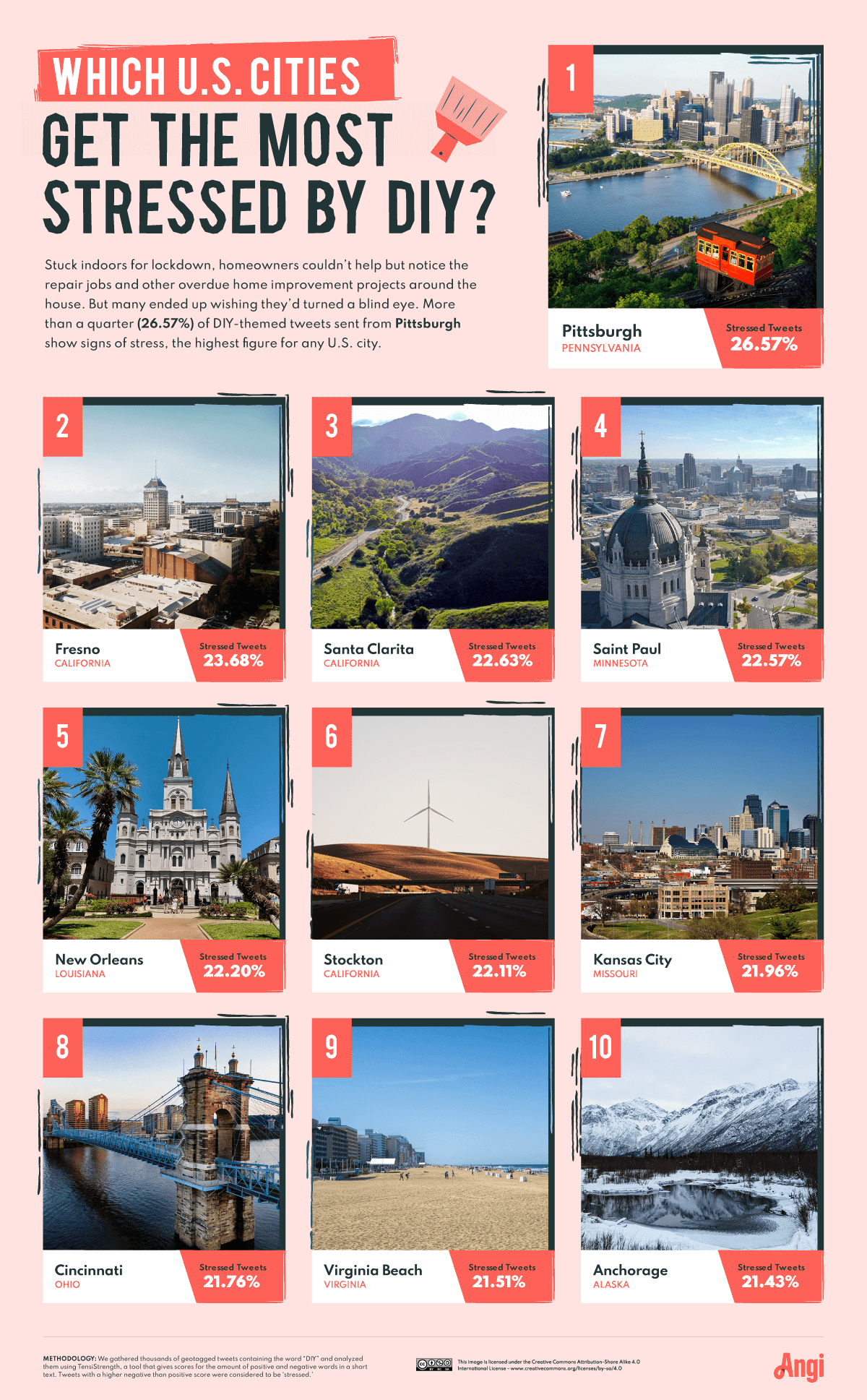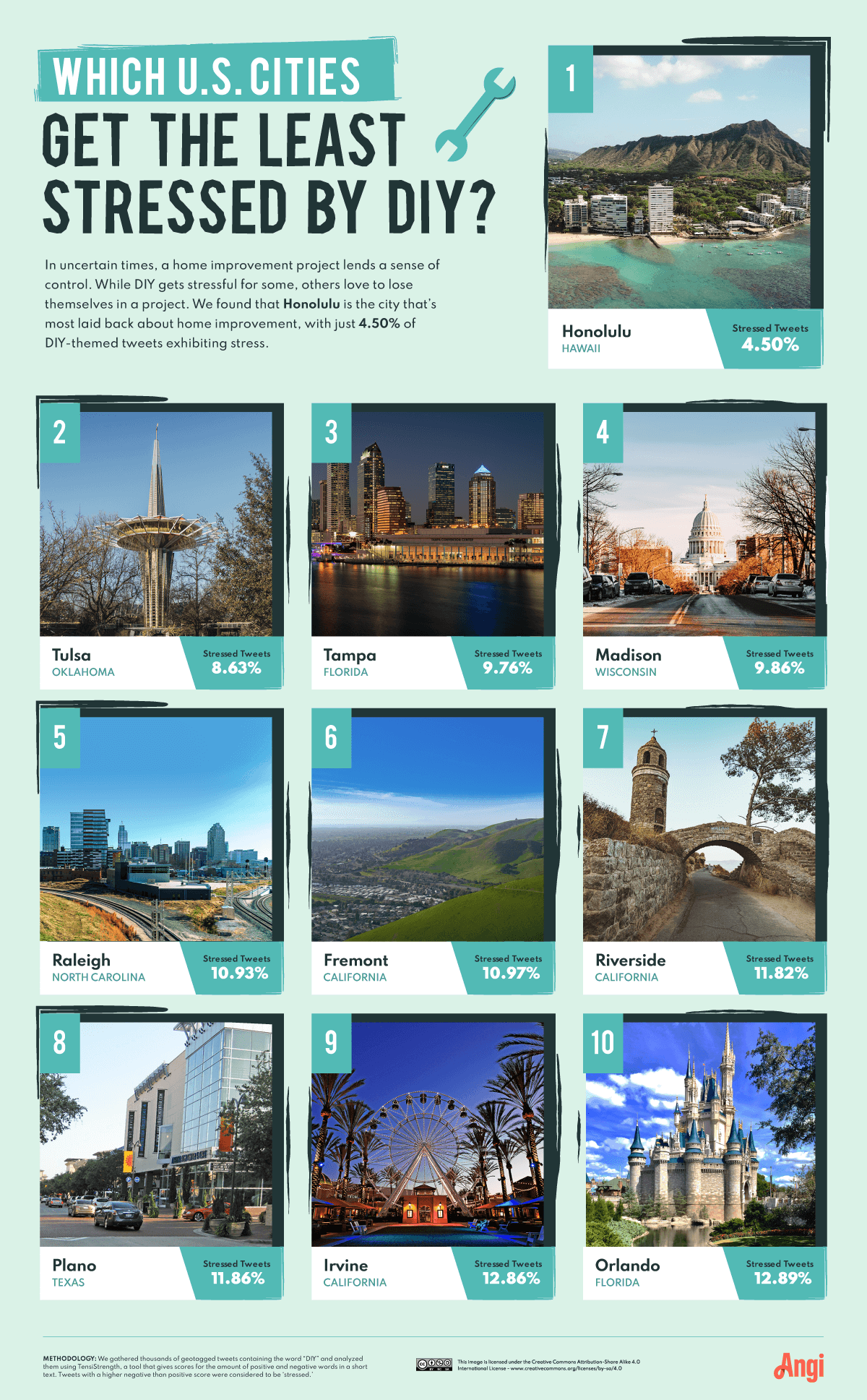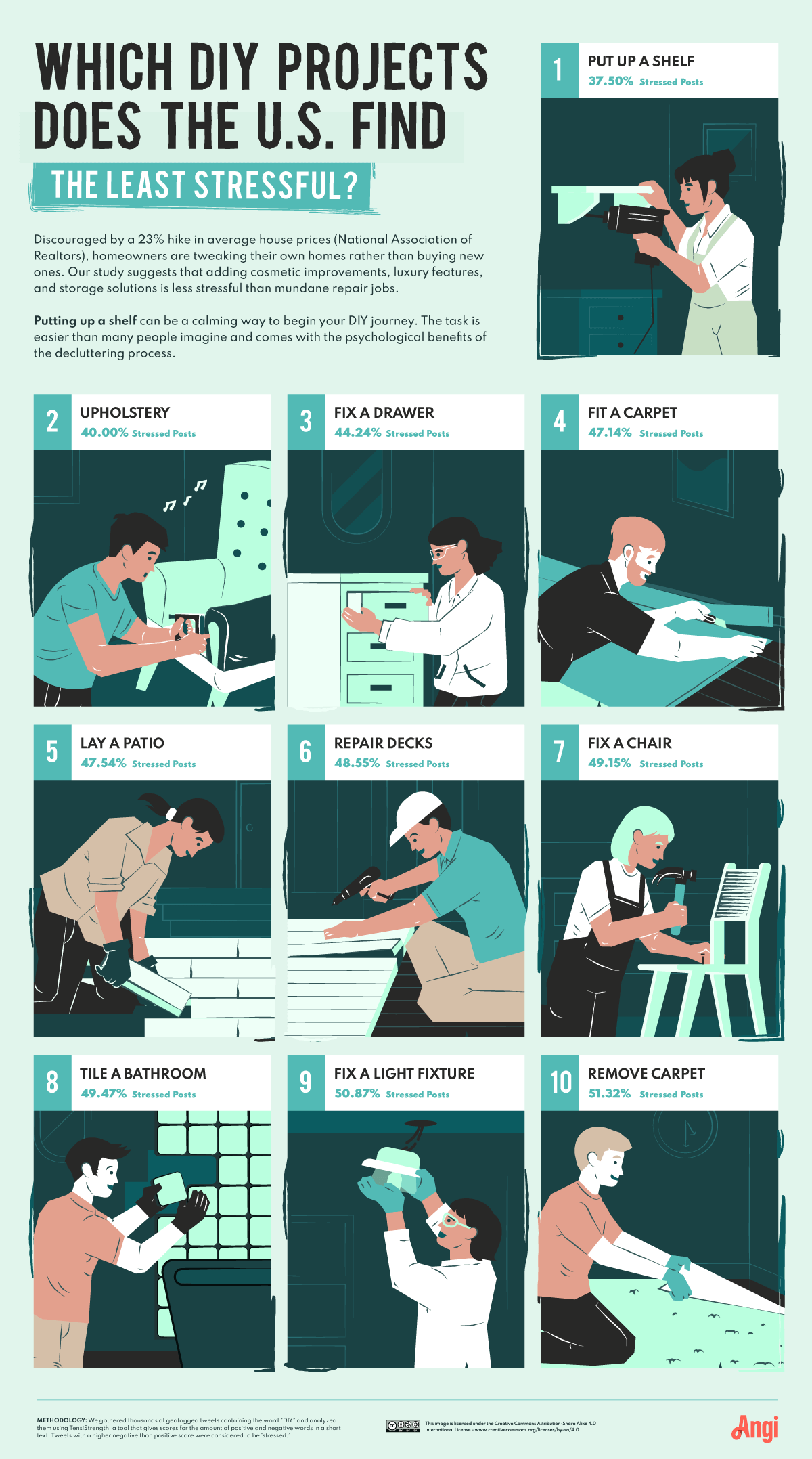Which U.S. States and Cities Struggle the Most With DIY


There’s a reason why Al from Home Improvement is a DIY icon. Detroit’s calmest contractor was a smooth, precise operator — at least when he had a tool in his hand. Sure, Al tended to lose his cool on more personal issues. But there’s something serene about watching a pro who’s quietly great at their job, especially when it’s the kind of work that drives you nuts.
Home improvement is an emotional thing. When the U.S. went DIY-wild at the start of the pandemic, it wasn’t just because we wanted nicer lockdown surroundings. There were two types of lockdown DIY addicts: those who saw home improvement as a way to focus the mind and remain calm and those who couldn’t sleep at night having finally noticed how much work the house needed. Both types were vulnerable to getting hot under the collar when things didn’t go according to plan.
Some fix-it projects are easier to complete by yourself, than others. But how do you know which jobs to leave to the professionals? Angi has identified the American states and cities where a DIY project is most likely to end in tears — and the projects which we struggle with the most. We analyzed Twitter data using TensiStrength to find the percentage of DIY-themed tweets that show signs of stress in every part of the U.S. — and the home improvement tasks most likely to get furious homeowners reaching for Twitter.
Key Findings
Indiana is the state that struggles the most with DIY, with 21.46% of local DIY-themed tweets indicating stress.
Hawaii is the state that finds home improvement least stressful (4.91%), and Honolulu is America’s least stressed city (4.5%).
The most stressful DIY task is unclogging drains, with a 66.93% stress rate.
The least stressful home improvement job is putting up a shelf (37.50%).
Hawaii Suffers One-Quarter of the DIY Stress of Indiana
The most stressed states are Indiana (21.46%), Rhode Island (21.20%), and Mississippi (20.13%). Each suffers more than four times the DIY angst of the nation’s calmest state for home improvement, Hawaii (4.91%). But Hawaiian DIY is not without its risks.

“In Hawaii households, sometimes as many as six stakeholders are involved and that’s when things get dicey,” says local pro, Evan Fujimoto. “You go on an emotional rollercoaster, because each person has his or her own ideas and priorities, and the amount of money being spent is significant.”
Pittsburgh Is Most Stressed DIY City in the U.S.
Share values in Home Depot doubled, and Lowe’s tripled during the first two pandemic years as homeowners bought tools and materials for their journeys into the ‘flow state.’ But supply chain issues mean many projects remain unfinished. Couple this with a nationwide shortage of contractors and there are plenty of tasks queuing up to get America’s amateur handypeople hot under the collar.

More than a quarter (26.57%) of the DIY-themed tweets sent from Pittsburgh show signs of stress. Pittsburgh’s housing is among America’s oldest, so maintenance is a pressing issue. Meanwhile, the city’s homes are the most affordable in the U.S., according to Demographia. Mending an old Pittsburgh home may feel stressful compared to the idea of buying a new one.

Honolulu (4.5%) is the least stressed city in our study, with barely half the stress rate of the next calmest city, Tulsa (8.63%). The Hawaiian culture of taking one’s time and enjoying the process may be what keeps Honolulu’s citizens from tweeting home project rage into the abyss. The city is ranked number one for mental health in the U.S. News Healthiest Communities Rankings 2021.
Cosmetic Projects Less Stressful than Messy Fixes
Wondering when to persist and when to call in a pro? According to our calculations, these are the DIY projects most and least likely to end in tears.

The most stressful tasks tend to be those that immerse you in the awfulness of your home’s digestive system. Time passes with slow frustration when you are up to the nose in drains, pipes, toilets, or gutters. The least stressful jobs tend to come with a visible result you can step back and admire, but the most stressful tasks above offer no ongoing satisfaction since they involve mundane home features that you only notice when they go wrong.

These least stressful tasks are what you bought that toolkit for: the serenity of the well-aligned shelf, the Tetris-like satisfaction of a perfectly fitted carpet. Storage solutions and cosmetic improvements are pleasant to do and offer pride on completion. As remote work compels many work-from-homers to add cabinets, office arrangements, and doors to their new workplaces, they’re discovering there was an even nicer home hidden inside their house all along.
Even the most accomplished DIY hand can get stressed with a tough project. And even the clumsiest rookie can enjoy the satisfaction of a job well done (or at least well tried). To ensure a smooth project, be sure to PPAWS for thought:
Plan ahead by researching how to complete the job and breaking it into small, manageable tasks.
Prepare by clearing enough room to work and laying out the tools and materials you need.
Ask for help from a friend or professional if you need it—teamwork makes the dream work!
Walk away if you’re getting wound up. Nothing gives perspective like tea and a cookie.
Share your successes to build confidence for the next task and inspire others.
Feeling better already? Here’s some inspiration for your next bathroom project.
METHODOLOGY AND SOURCES
Using the Twitter API, we extracted tweets containing the word "DIY." To collect as many tweets as possible, we used two approaches:
We kept only tweets with location attributes within the United States and dropped any duplicates, ending up with 153,463 tweets.
We passed all the tweets through the TensiStrength tool considering the tweets whose stress level was higher than the level of relaxation as stressed ones.
We kept only the top 100 most populous U.S. cities with at least 50 tweets.
To generate project-related tabs, we built the long lists of DIY tasks using the following sources:
- https://www.familyhandyman.com/list/100-home-repairs-you-can-do-yourself/
- https://www.mirror.co.uk/news/uk-news/top-30-tricky-diy-jobs-22680978
Then we scraped the forum posts from https://www.doityourself.com/search?dsp=forum using our tasks as a search query.
Once the filtering wrapped up, we applied the same tool (TensiStrength) and used the same logic to label a post as stressed, allowing us to calculate the % of posts about a project that was stressed.
The data was collected in March 2022.








